SEO is more than just a tool for making you appear more prominently in search results. It helps more people get to know you (referred to as brand awareness).
This can be beneficial to your business.
To understand why, let’s explore the relationship between brand awareness and SEO more closely.
How Does SEO Impact Brand Awareness?
SEO boosts brand awareness by improving your website’s visibility in search engine results. Leading to increased organic (unpaid) traffic that can translate to conversions.
Imagine a user sees your website appear on search engine results pages (SERPs) when they enter terms like “personalized candle gifts,” “custom candles,” and “make your own candle scent.”
This puts your brand on their radar.
One of the most impactful ways to enhance brand awareness in this way is to improve your rankings for non-branded, long-tail search terms. These are highly specific phrases that don’t mention your brand name and tend to have lower search volumes.
These keywords also tend to have lower keyword difficulty scores. Which measures how hard it’ll be to rank well for a particular search query.
For example, in our Keyword Overview Tool, “candles” has a keyword difficulty score of 61%. Meaning it’ll be difficult to rank for this term unless you have a highly reputable site.
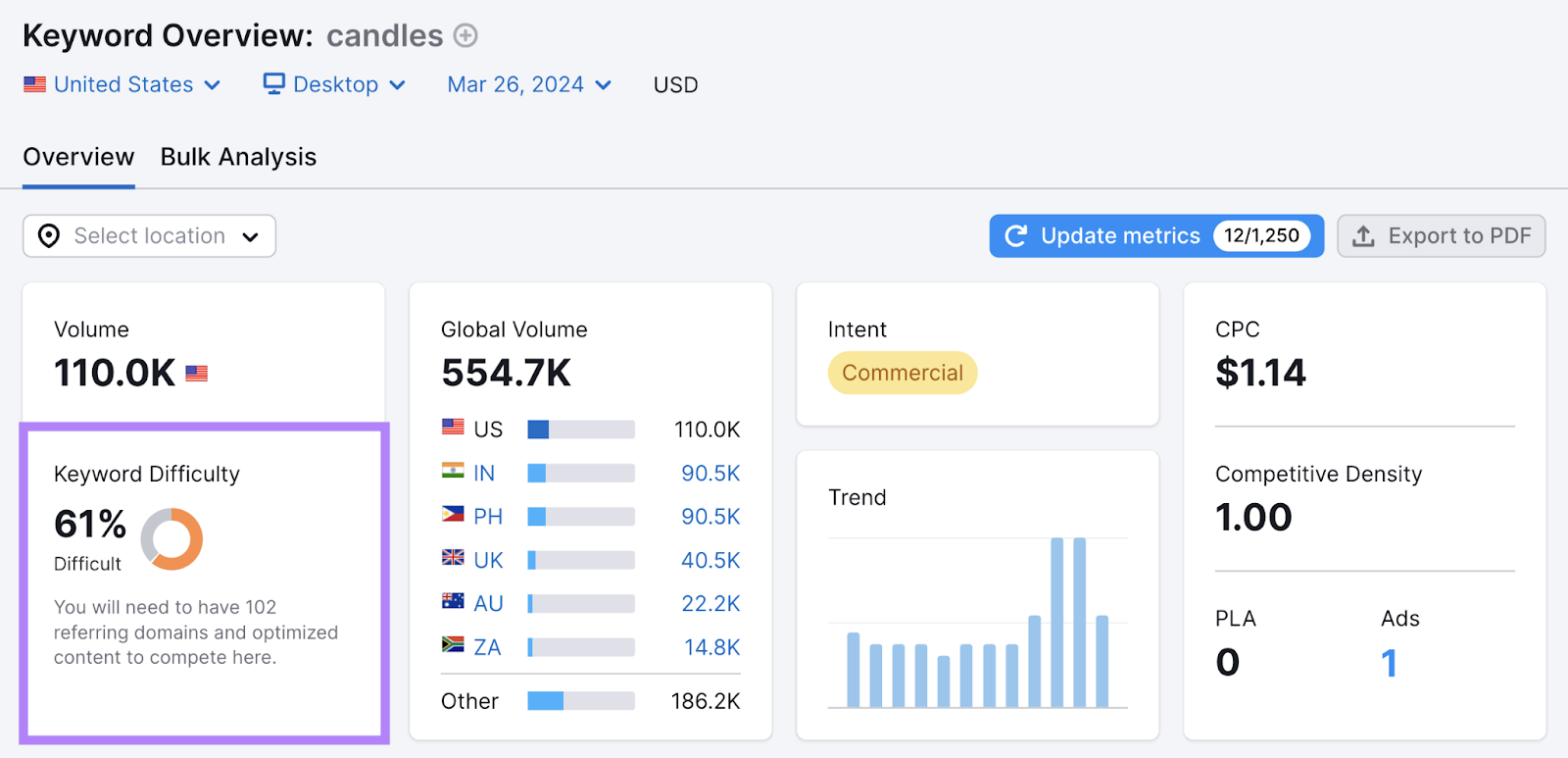
But “birthday candles” has a difficulty score of 26%.
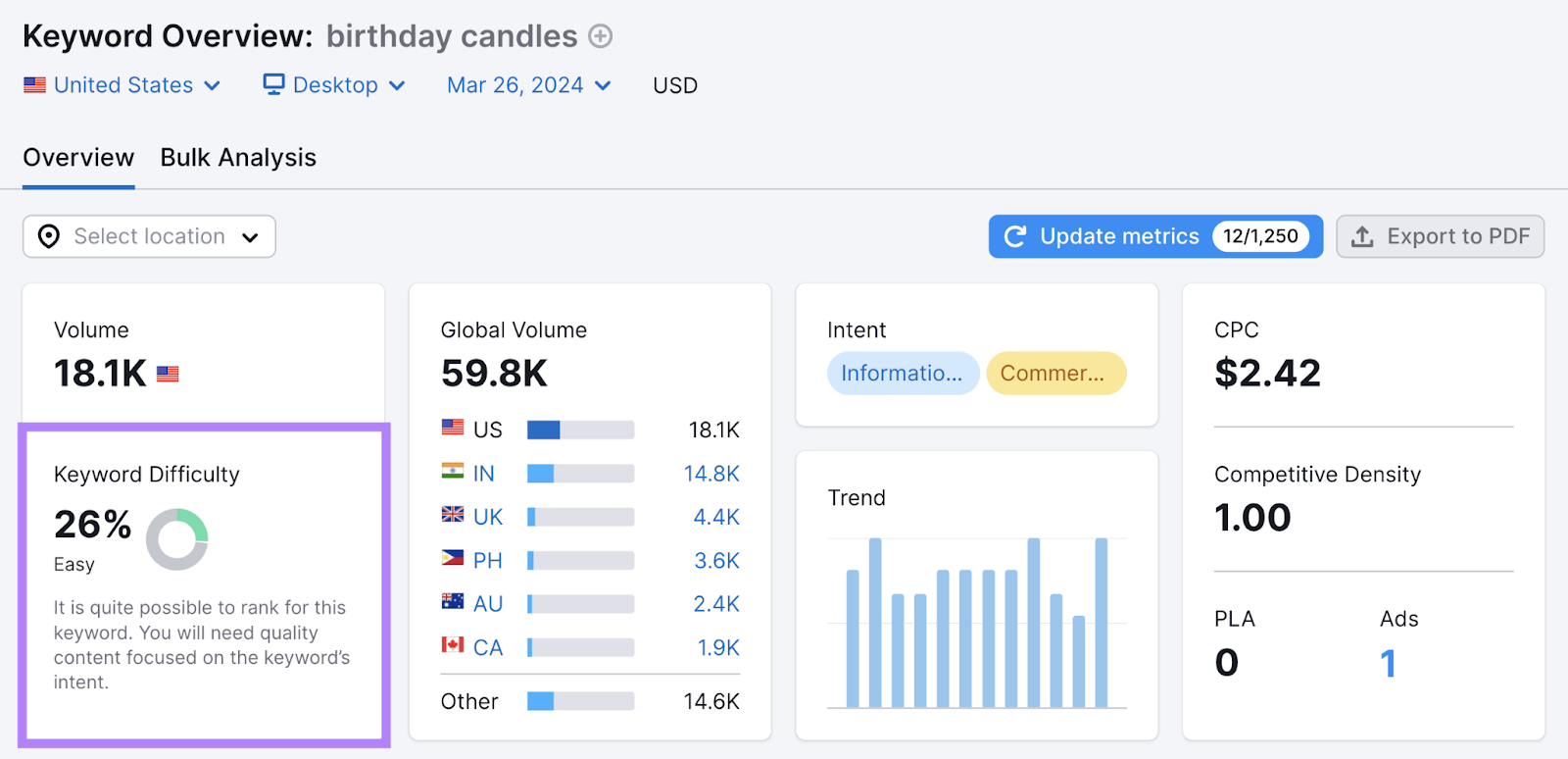

It’ll be easier to rank for this term and others like it. Including “birthday cake candles” and “happy birthday candles.” Which have even lower keyword difficulty scores.
Optimizing your content for terms like these gives you a better chance of appearing in search results that prospective customers see.
And if they start to see your content multiple times, that leads to greater brand awareness that can boost sales over time.
How Does Brand Awareness Impact SEO?
As users become more familiar with your brand, they’ll be more likely to click on your results and search for branded terms. Which can further improve your rankings and organic traffic.
But growing brand awareness can also benefit you when other companies start to recognize you.
For example, let’s say there are many authoritative websites targeting the search term “running shoes.” And they mention your brand in product reviews or list articles that contain backlinks (links on their domains that go to your website).
Backlinks are an important ranking factor. So, acquiring them can make your entire website more authoritative and boost your SEO results.
How to Use SEO to Grow Brand Awareness
1. Create Keyword Clusters
Identifying keyword clusters (groups of closely related search terms) that include relevant, long-tail keywords can help you build topical authority. And more effectively boost your rankings.
Why?
Because you can target all the terms in the cluster with a single page. Instead of having to create a page for each keyword.
For example, the following keywords could be clustered together:
- “personalized scented candles”
- “make your own candle scent”
- “custom scented candles”
Use Keyword Strategy Builder to create a clustered set of long-tail keywords.
Here’s how:
Choose a broad term that describes your product or service. Like “candles.”
Select your preferred country and click “Create list.”

This will bring up a list of pillar pages and subpages with relevant keyword clusters. The tool automatically groups them for you.

To focus on long-tail keywords, filter by keyword difficulty.
Click the “KD %” drop-down and enter “0” and “29” in the “Custom range” fields to filter your results for keywords that are “easy” or “very easy” to rank for (and likely to be long-tail variations).
Then, click “Apply.”

Now, you’ll have a list of pillar and subpages with clusters of relevant keywords you can feasibly rank for.

2. Determine What Kind of Content to Publish
Now that you know which terms you’re going to target, you need to decide what kind of content to create. Because creating the right type of piece gives you the best possible chance of ranking.
You can do this easily inside Keyword Strategy Builder. Because the tool will help you discover what content you’ll need to create to outrank competitors.
Click the arrow to the left of each keyword cluster to expand all the keywords inside it.

In the right-hand column, Keyword Strategy Builder will show you a list of top-ranking pages for this keyword cluster.

Your goal is to understand what makes that content great. So you can figure out how to create something even better.
To achieve this, we recommend you read the competitors’ articles. And note any patterns you find related to:
- Page types (product page, collection page, how-to article, listicle, etc.)
- Titles (length, word choice, etc.)
- Headings and subheadings (keyword use, total number, etc.)
- Text length (short, long, or somewhere in between)
- Images (where they’re placed, how many there are, etc.)
For example, you might notice a competitor created a collection page with a header image. And a frequently asked questions (FAQs) section.
As you view other competitors’ pages, you might notice they’re collection pages too.
This means you might want to consider making one yourself. But with more descriptive copy and a product quiz to help users find what they’re looking for.
Continue this for each keyword cluster until you’ve mapped out all the pages you’ll create.
3. Create High-Quality Content
Now, it’s time to create new pages that contain engaging, optimized content.
Return to one of the clusters in Keyword Strategy Builder and click the “Write content” button on the right-hand side.
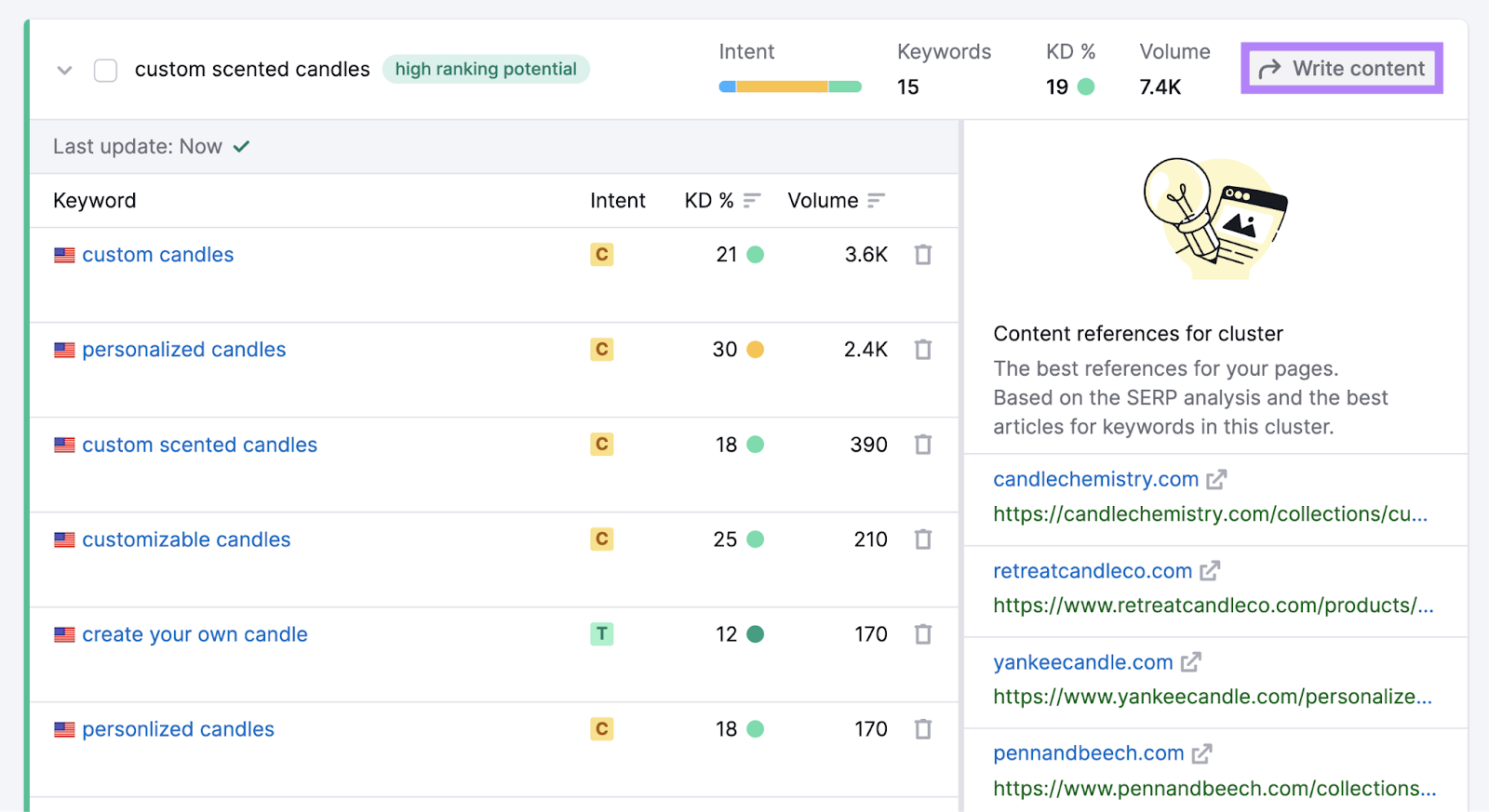
In the pop-up that appears, click “Send keywords.”
This will bring up a blank page in SEO Writing Assistant.
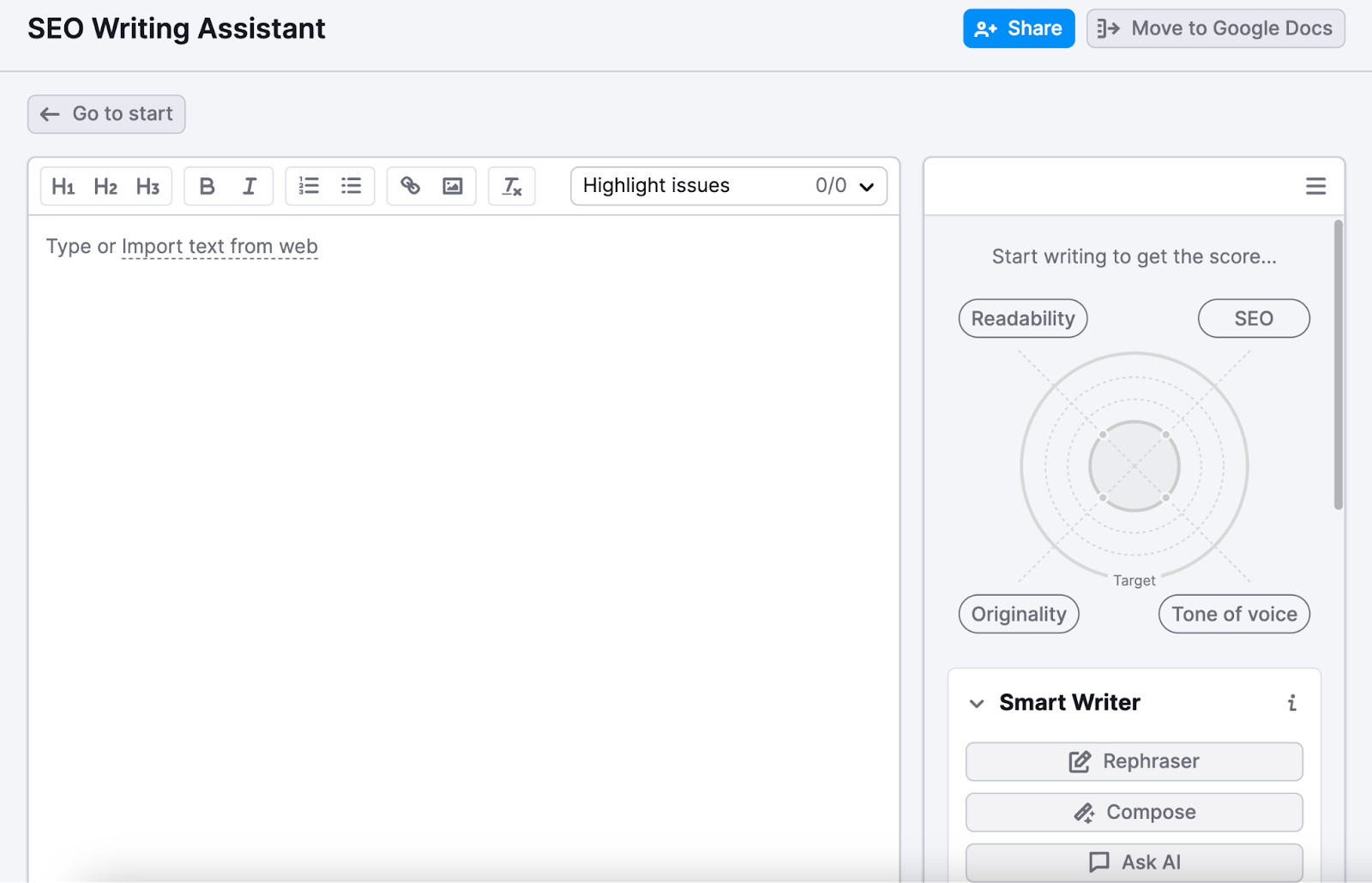
As you start typing, the charts and recommendations in the right-hand column will update. And provide readability, SEO, originality, and tone of voice suggestions.
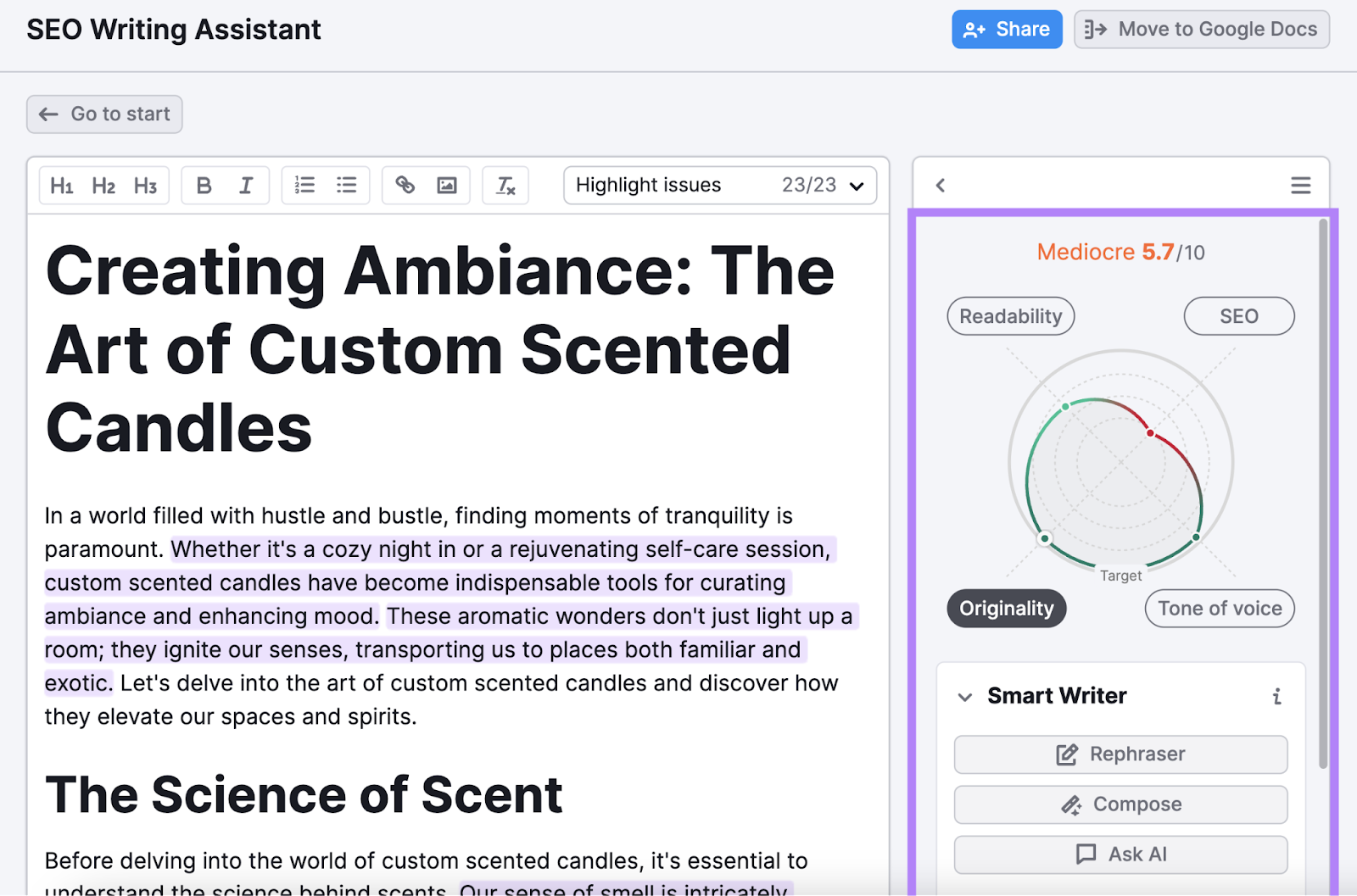
If you get stuck or need some inspiration, try the “Smart Writer” features. Which allow you to rephrase portions, generate new copy, or ask AI for suggestions.
Try to include all the elements you previously mapped out. And to score as well as possible in SEO Writing Assistant by implementing the suggestions.
Doing this gives you a better chance of appearing prominently in search results for the keywords you’re targeting.
4. Build Backlinks
For Google, backlinks act like votes of confidence vouching that your website is reputable. And that it should be visible on SERPs.
And the more high-quality backlinks you have, the better for your overall brand awareness.
Let’s say you haven’t achieved many rankings for the cluster “custom scented candles” yet.
To get backlinks for the page targeting the cluster, it’s helpful to understand who’s linking to your competitors.
So, head back to Keyword Strategy Builder, expand the cluster, and focus on one of the competitor links in the right-hand column again.
Copy that link. Then, go to the Backlink Gap tool.
Paste the URL you just copied into the second “Add domain” field. And enter your own URL into the “You” field above it.
Set both drop-downs to “URL” and click “Find prospects.”
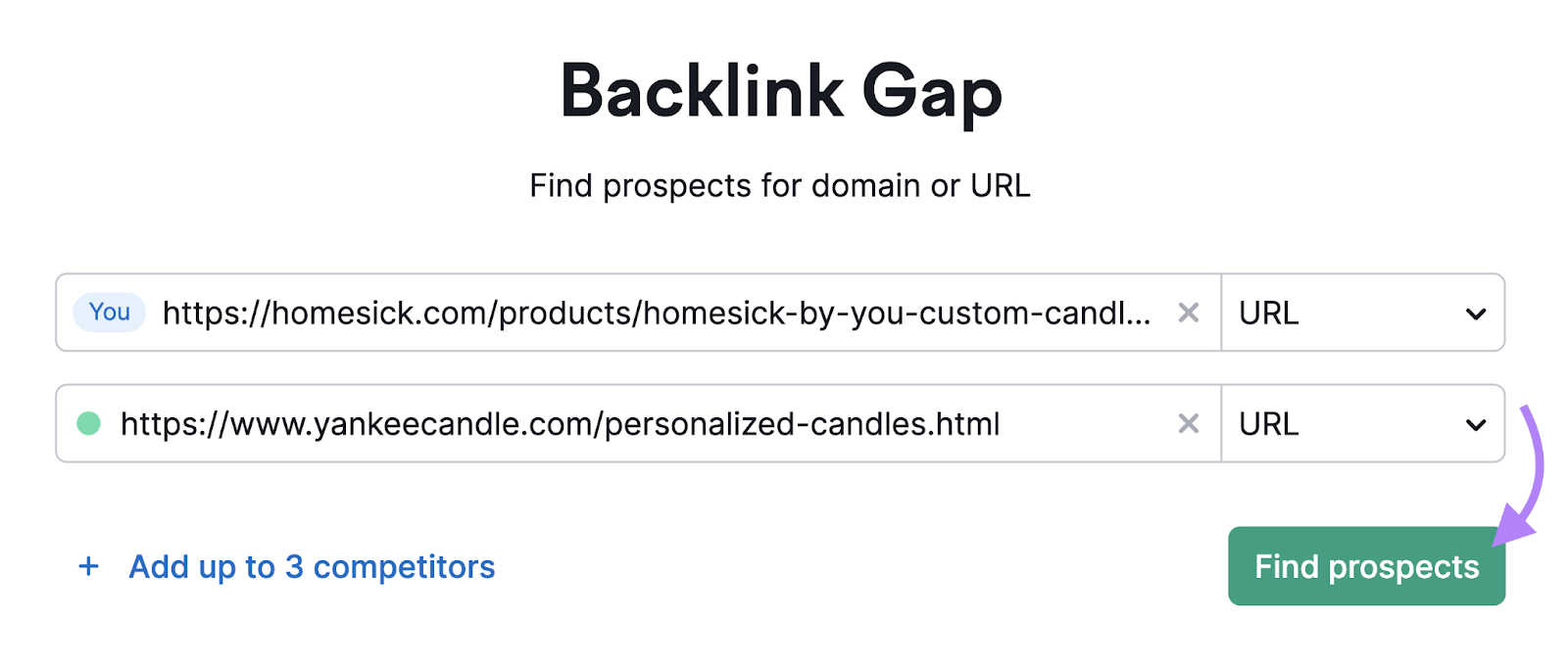
Now, you’ll see which domains link to the competing page but not yours. They’ll be sorted by Authority Score (a metric that indicates a site’s overall reputability), which means the most valuable backlinks will be at the top.
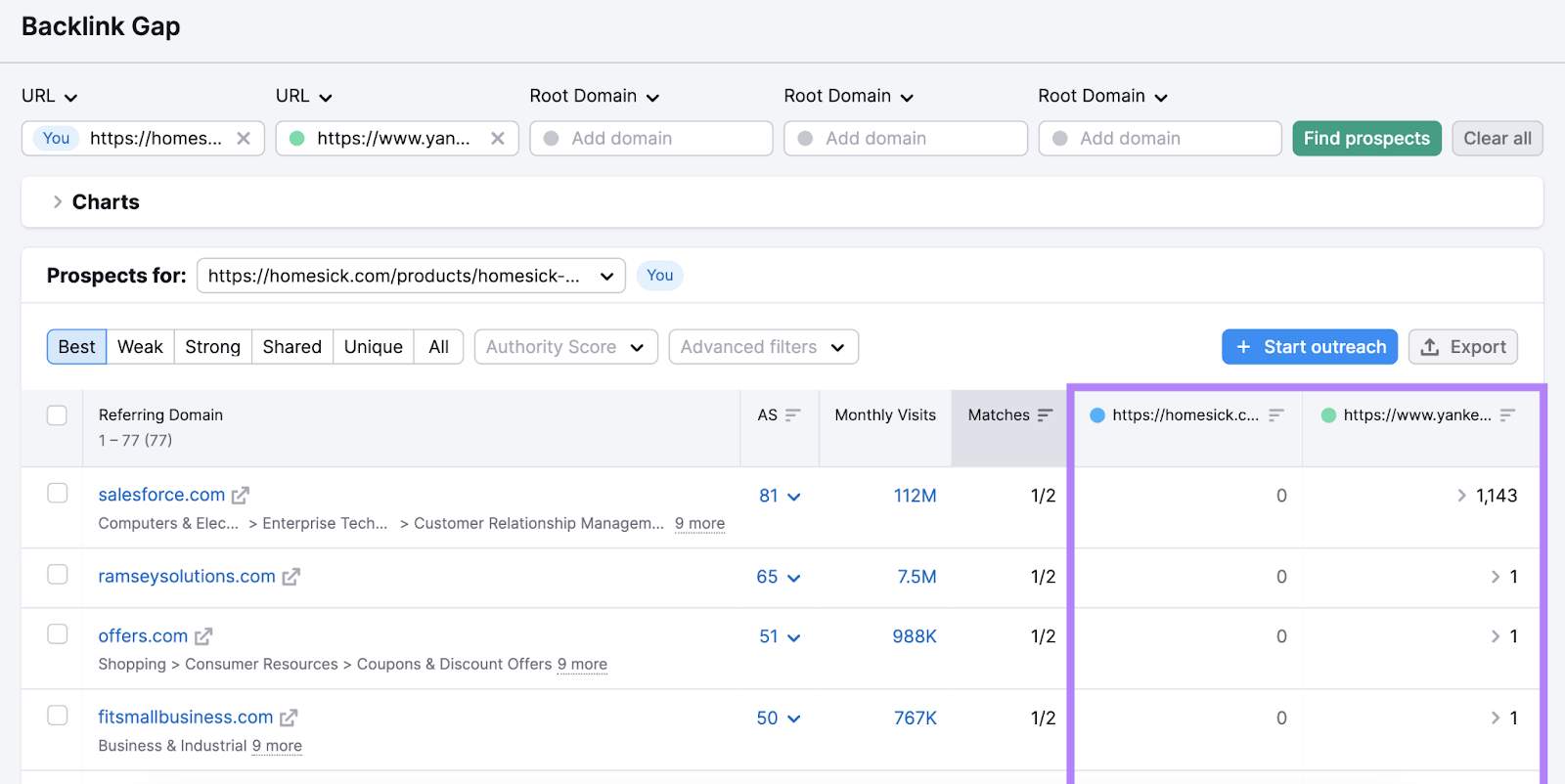
Click the arrow in the column on the far right to see all the backlinks from a particular website to your competitor’s page:
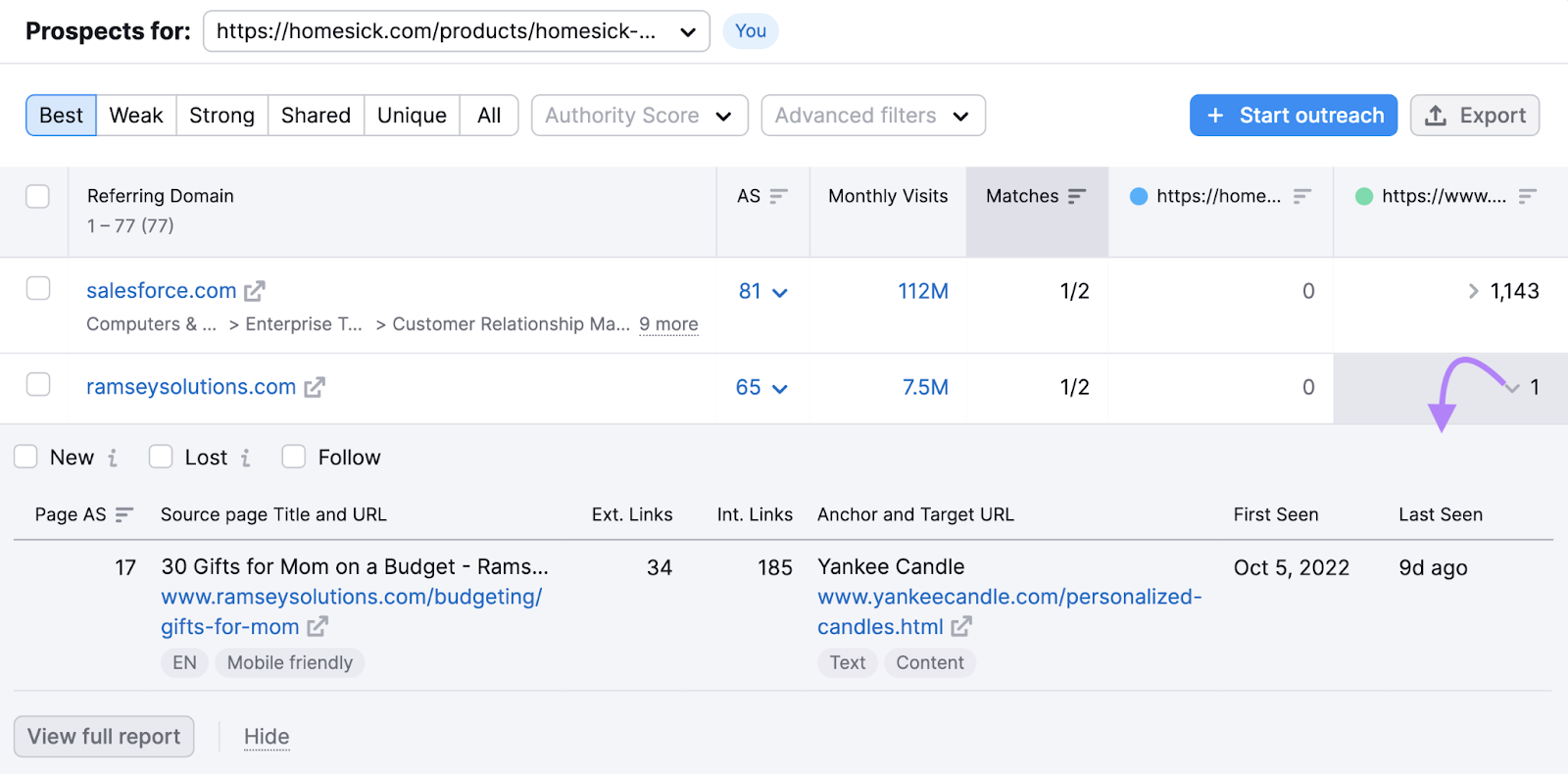
It’s a good idea to visit the page(s) that link to your competitor. So you can see how the competitor is mentioned.
With this information, you can then reach out to the high-authority site to ask for them to link to you in a similar way.
Or, try some other link building tactics like finding broken links to replace or guest blogging.
5. Provide a Good User Experience
Ranking for your keyword clusters and gaining backlinks will help drive visibility, but you need to provide a great user experience (UX) to convince visitors to stick around. And to maintain good SEO performance in the long run.
Here are two of the best ways to do that:
Maintain Strong Core Web Vitals Scores
First, check how well your site’s performing from a UX standpoint by evaluating Core Web Vitals scores. Core Web Vitals are a set of metrics that measure a website's user-friendliness.
Open Site Audit, enter your domain, and click “Start Audit.”

This will bring up the Site Audit Settings.
Once you’ve configured your audit, click “Start Site Audit.”
When the audit is ready, you’ll see an “Overview” report. Under the “Thematic Reports” section, you’ll find a box called “Core Web Vitals.”
Click “View details.”
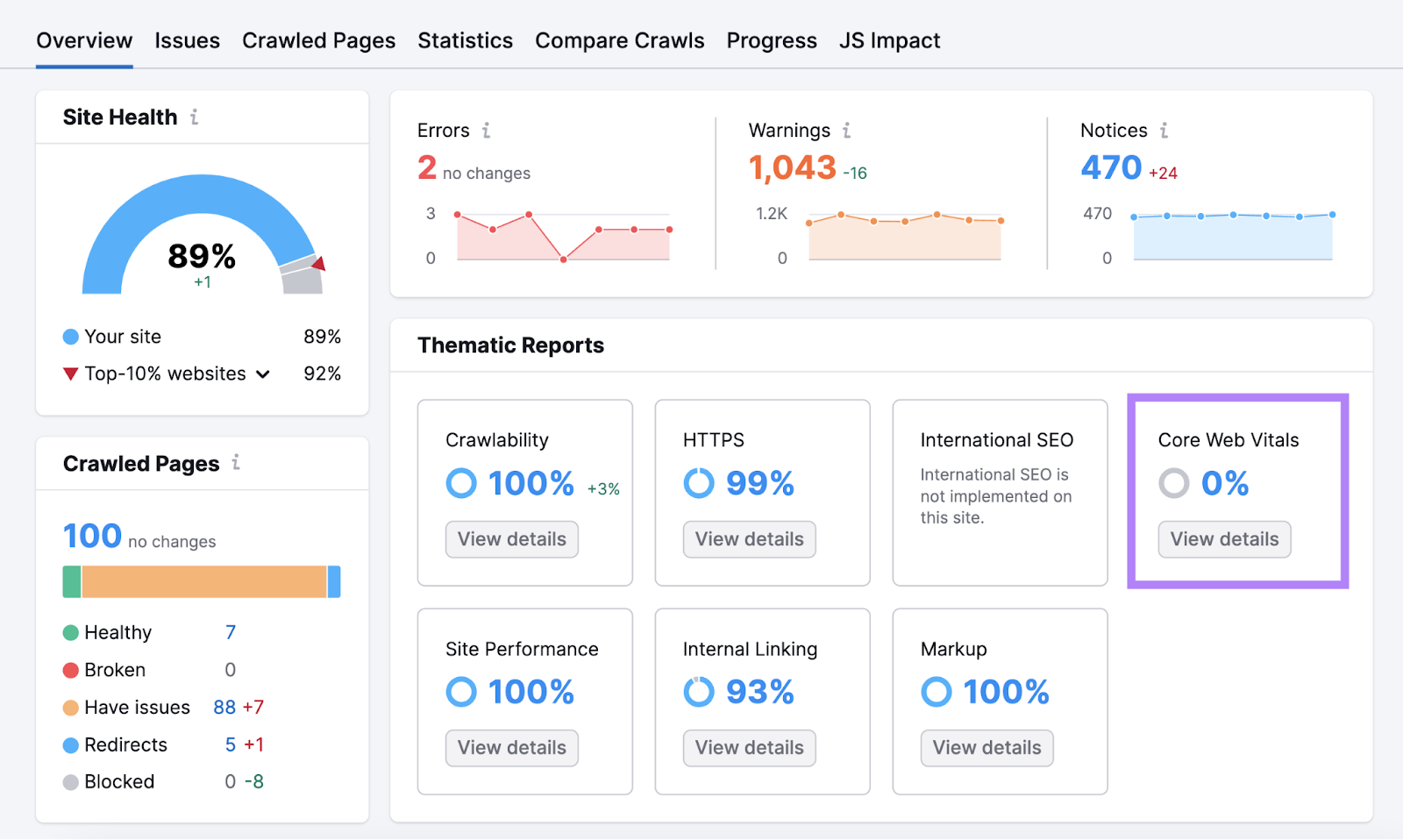
Now, you’ll see your Core Web Vitals scores (“good,” “to improve,” or “poor”).
If you see any metrics that haven’t achieved a “good” rating yet, scroll to the “Analyzed Pages” table.
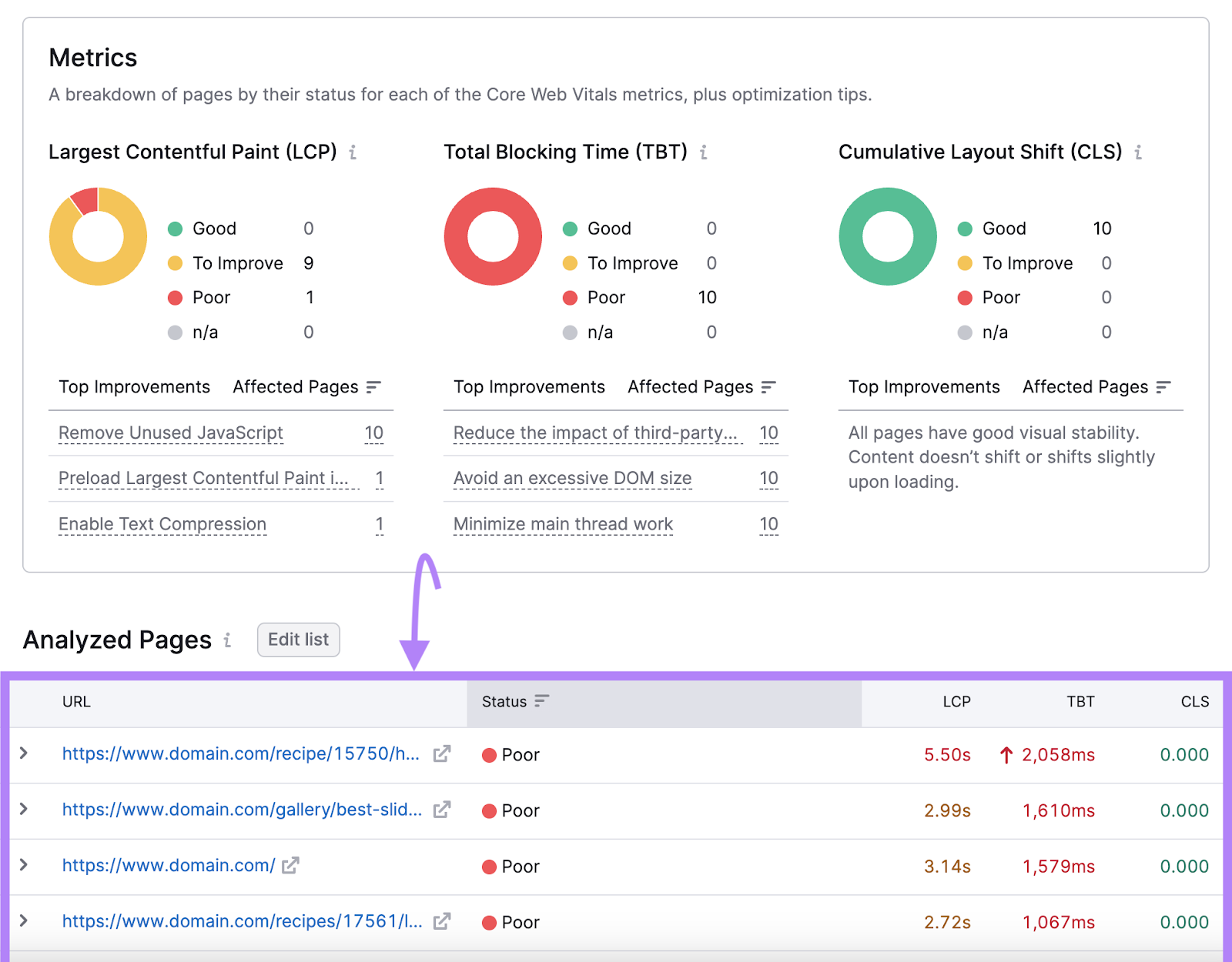
Click on the arrow to the left of a URL to expand it. To see all issues preventing this page from performing as well as it could.
Next, select “How to Improve” and click one of the issues under “Audits” to see an explanation of what it is and how to fix it.
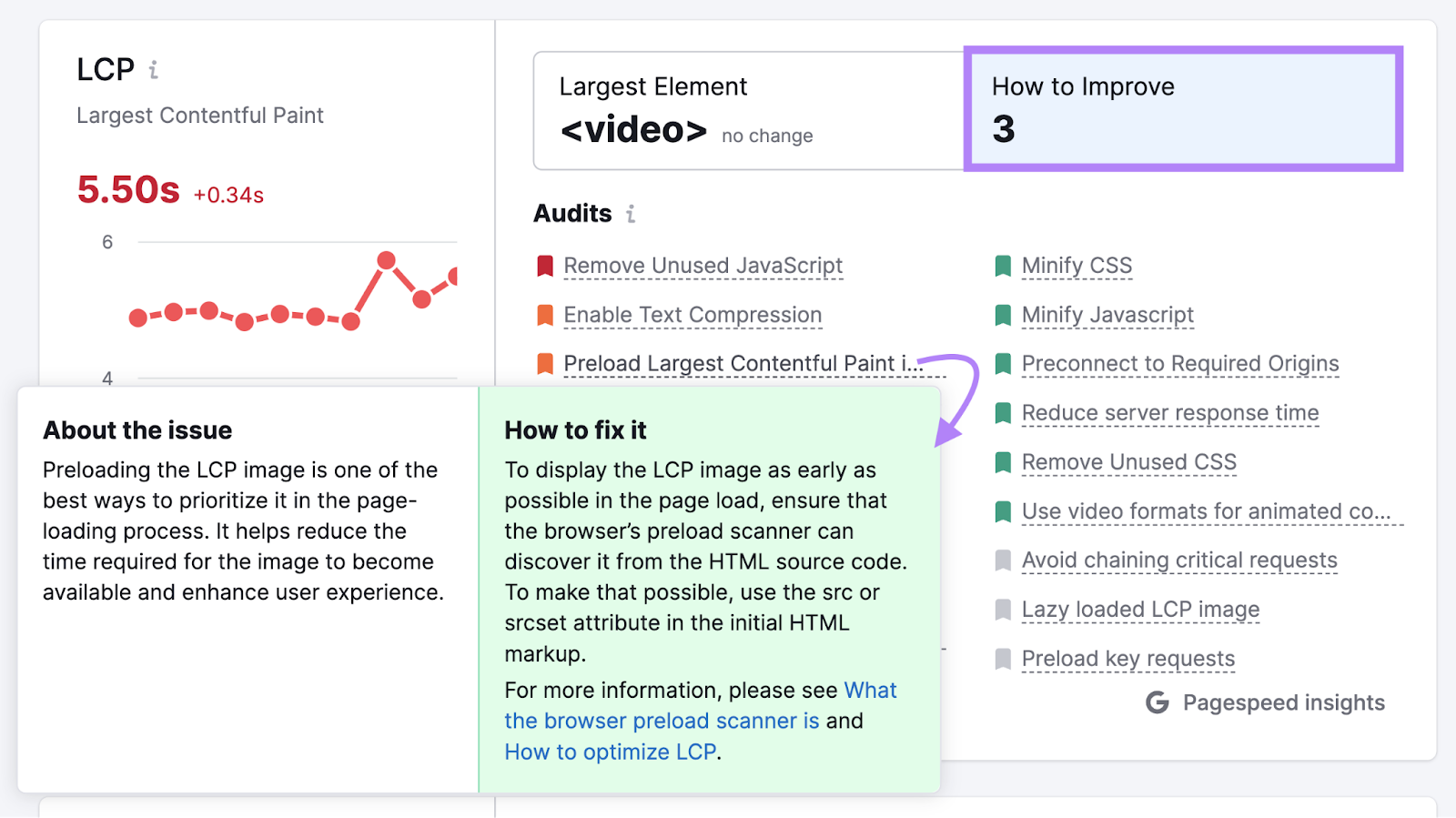
Look into your most important pages first and fix any of those issues first.
Then, go down the list. So you can work toward getting all your Core Web Vitals to “good.”
Provide a Secure Connection
Another component of providing a good user experience is using a secure connection. Because it assures website visitors that their information is protected.
This means your site and all its elements should be accessible via hypertext transfer protocol secure (HTTPS). Not hypertext transfer protocol (HTTP).
HTTPS is better than HTTP because it encrypts the data transferred between a user’s browser and the website to prevent unauthorized access to that information.
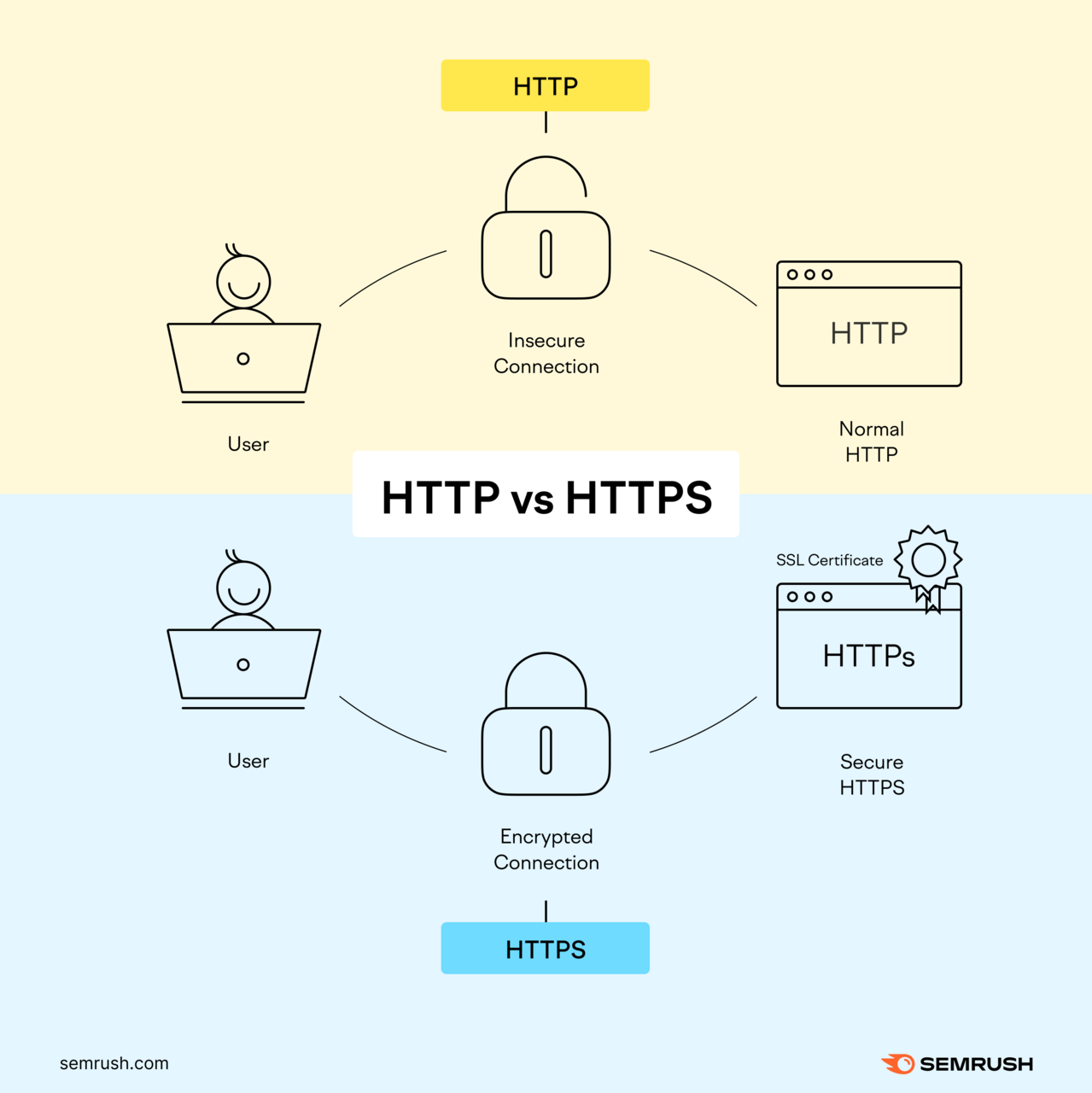
HTTPS is so important that it’s also a confirmed ranking factor. Meaning Google will prioritize results from websites that use HTTPS over those that use HTTP.
To transition to HTTPS, you’ll need to obtain a secure sockets layer/transport layer security (SSL/TLS) certificate, install it on your site, and migrate your entire site using 301 redirects.
Check out our overview of how to migrate from HTTP to HTTPS for more detailed instructions.
Then, check for implementation issues in Site Audit.
Look for “HTTPS” under “Thematic Reports.” And click the “View details” button.
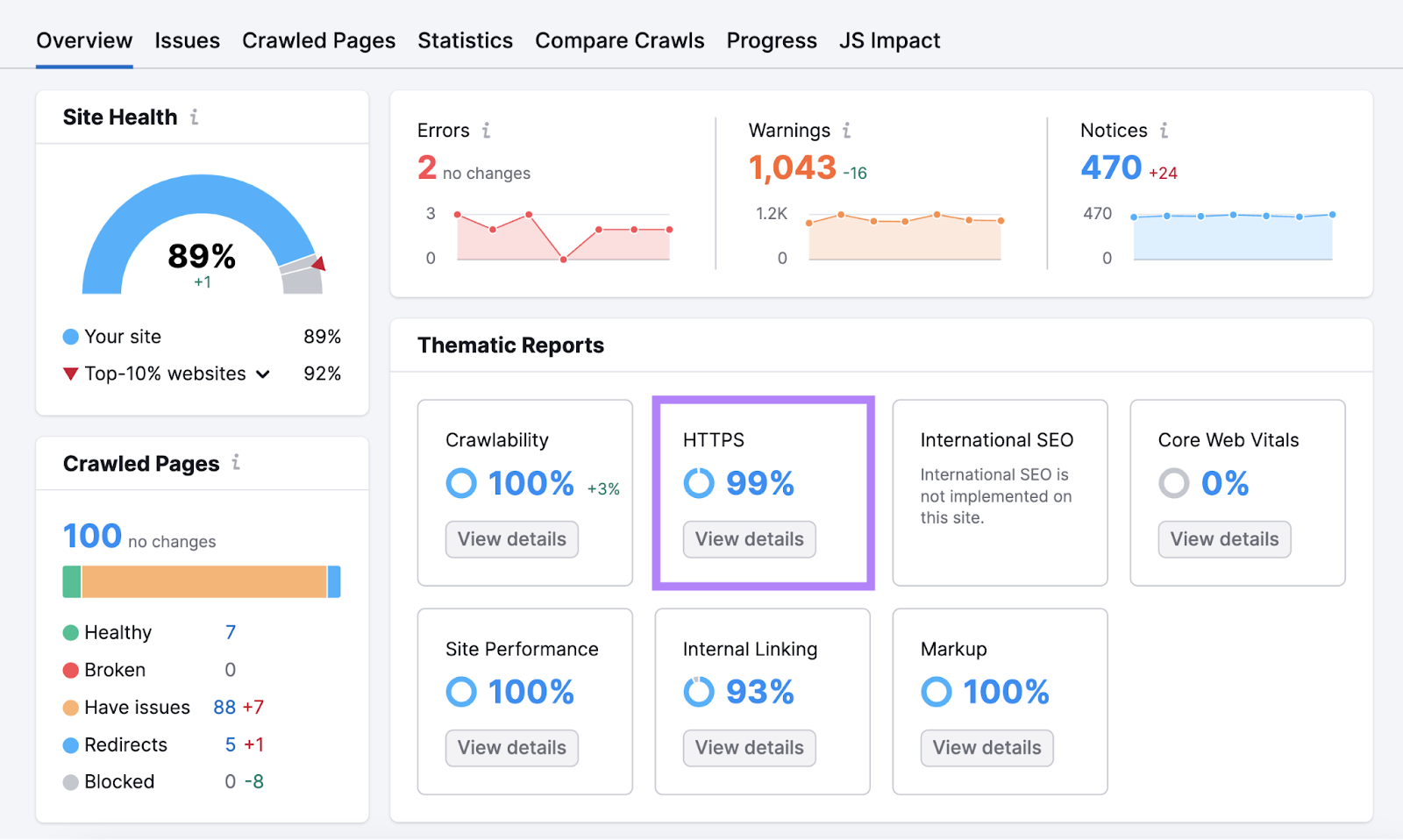
Now, you’ll see any issues affecting your connectivity. Such as expired certificates. Or non-secure links on your site.
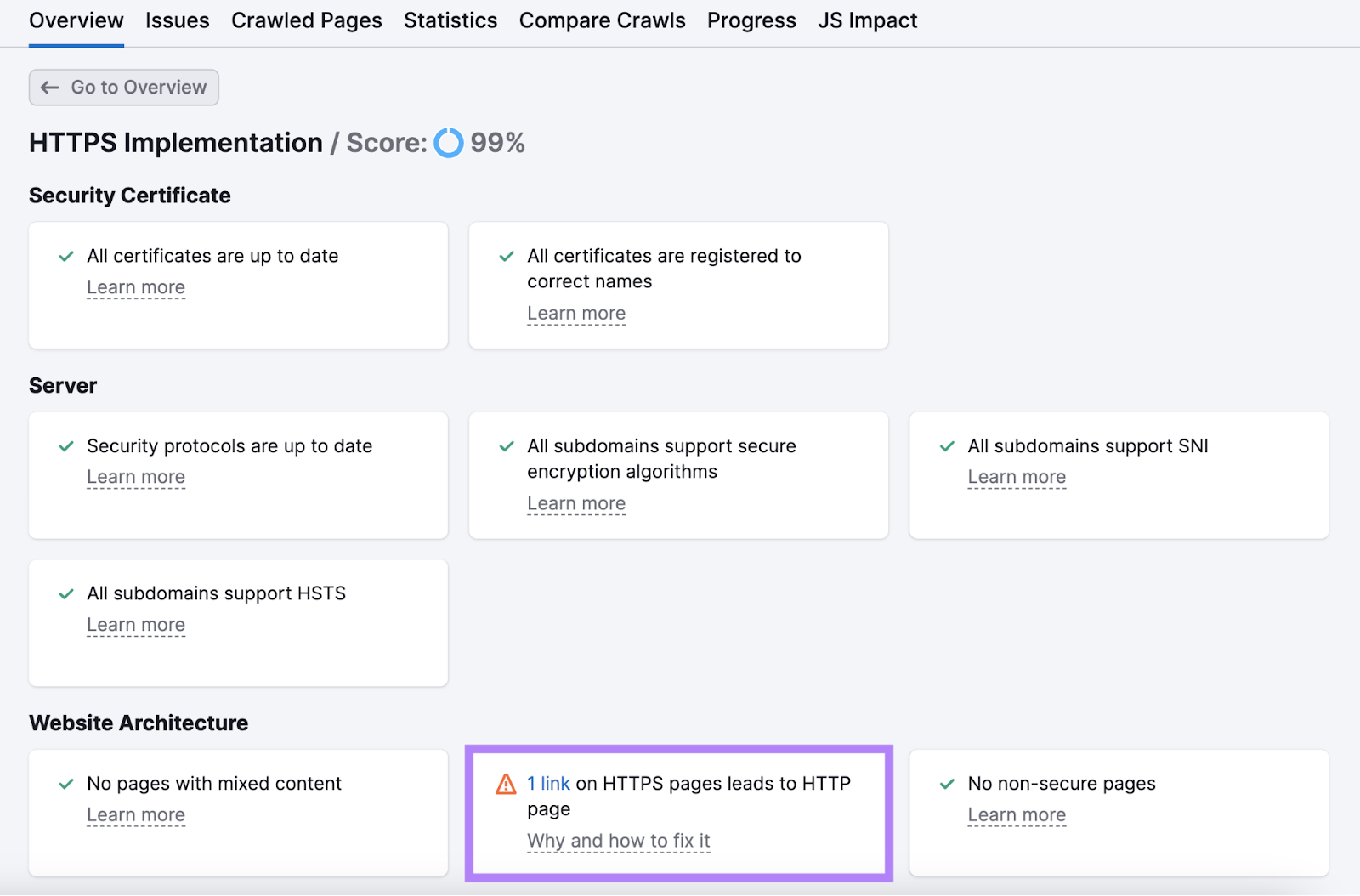
If there’s an issue, click “Why and how to fix it.”
This will give you instructions to remedy the problem. So you can provide a secure connection to all users.
Measuring SEO’s Impact on Brand Awareness
There are multiple ways to gain a sense of how well-known your brand is. And one is to look into how much traffic you get from branded search.
Use Organic Research to find this value.
Open the tool, enter your domain, and click “Search.”
Go to the “Positions” tab.
Then, select the “Advanced filters” drop-down and set it to “Include” > “Keyword type” > “Branded.” And click “Apply.”
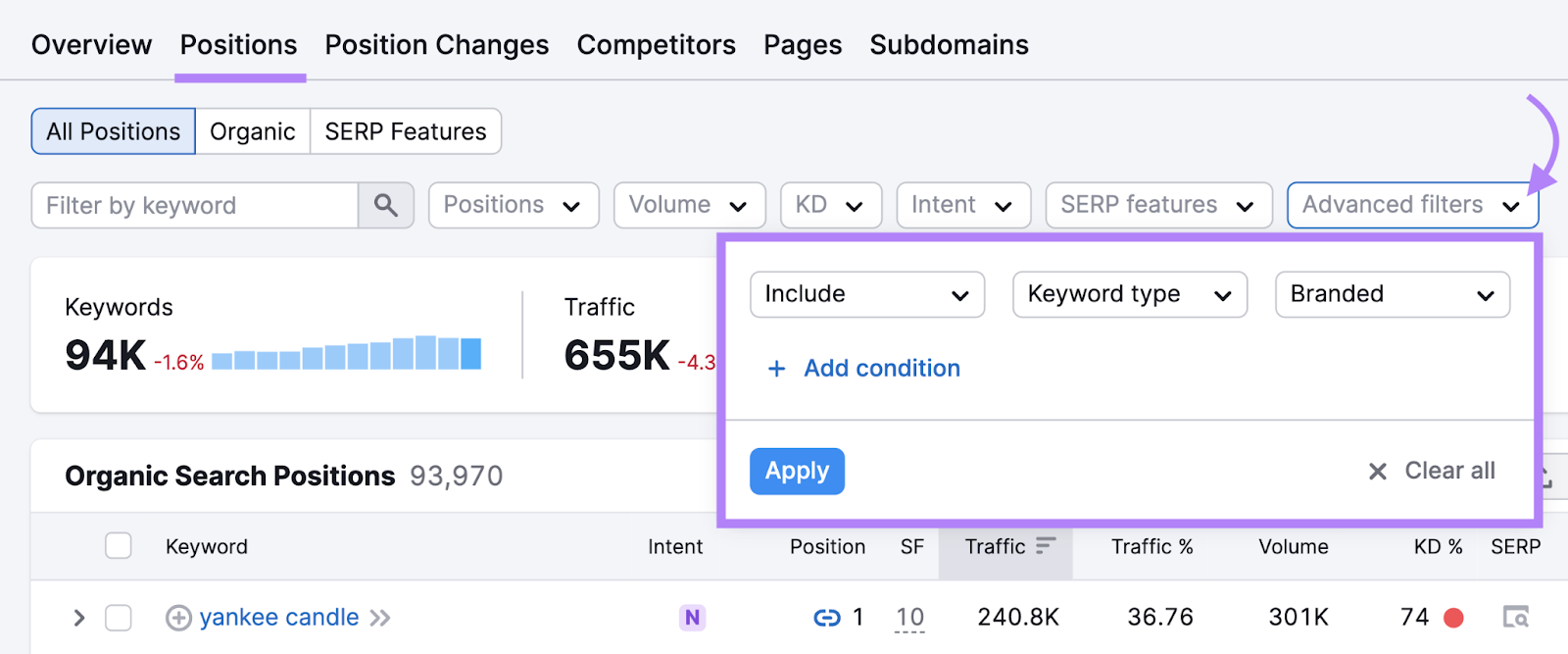
You’ll now be able to see the average amount of traffic you get from branded searches each month just above the table.

As you work to increase your brand awareness, this number should grow.
It’s also a good idea to look into your brand mentions in articles, forums, social media, etc.
Brand mentions are less exact than branded search volume. Because they only account for recognition from those who publish/post content.
But they still give you a good understanding of how much brand awareness you have.
Use the Brand Monitoring app to measure your mentions.
You’ll be able to see your total number of mentions, how many mentions contain backlinks, and more.
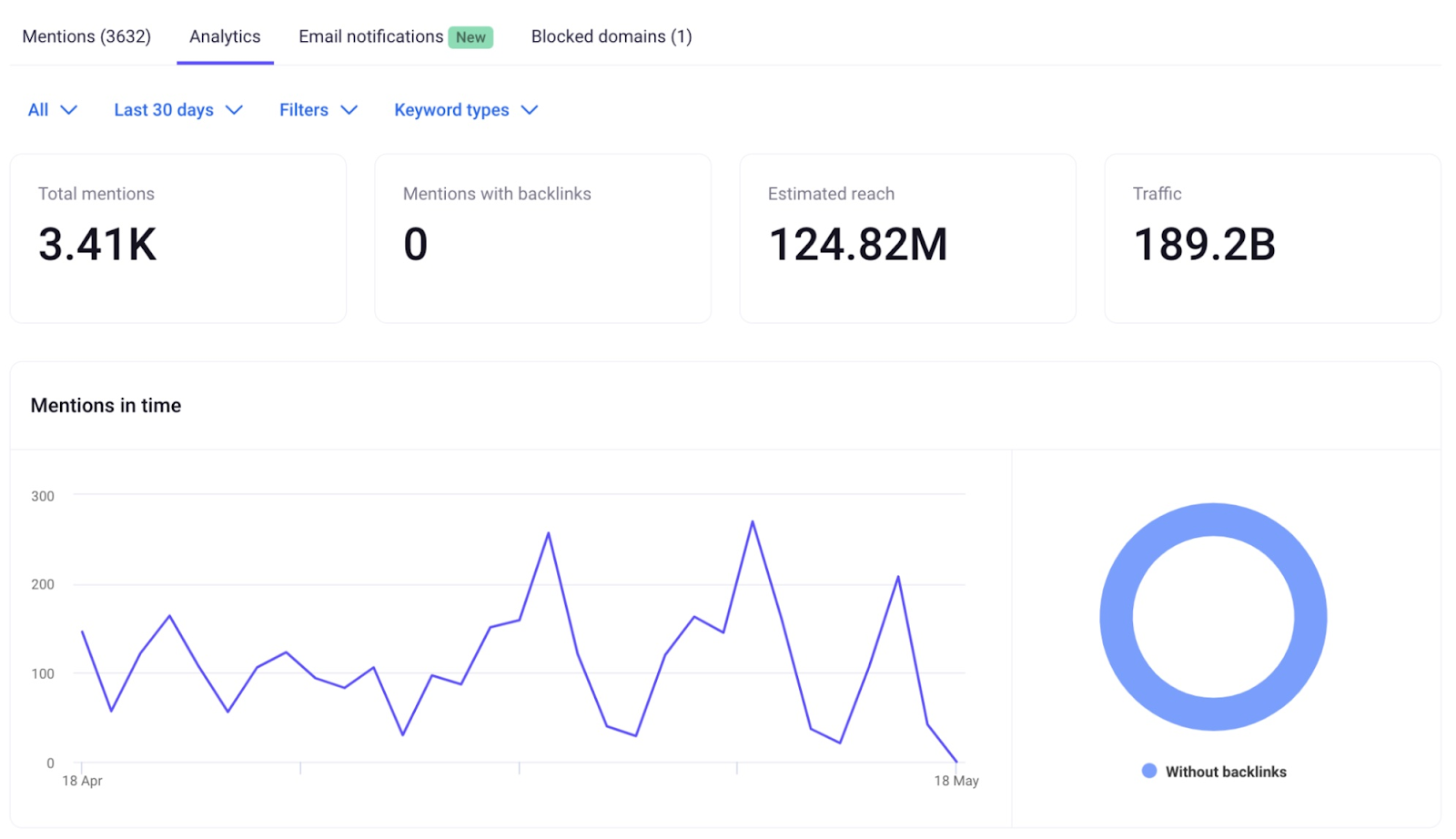
Use SEO in Your Brand Awareness Strategy
SEO helps build brand awareness over time.
But the right tools can help you achieve results faster and more easily.
So, try Semrush to access options for finding relevant keywords, writing quality content, building backlinks, and more.
